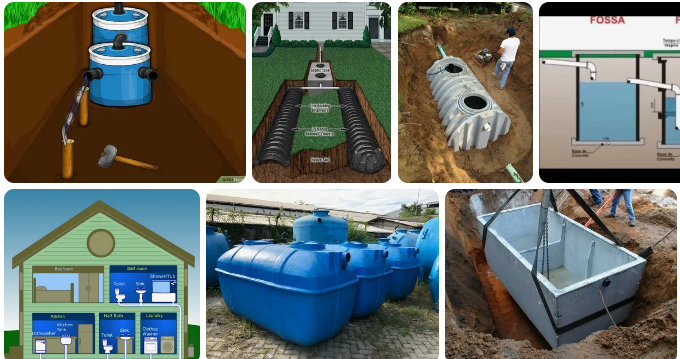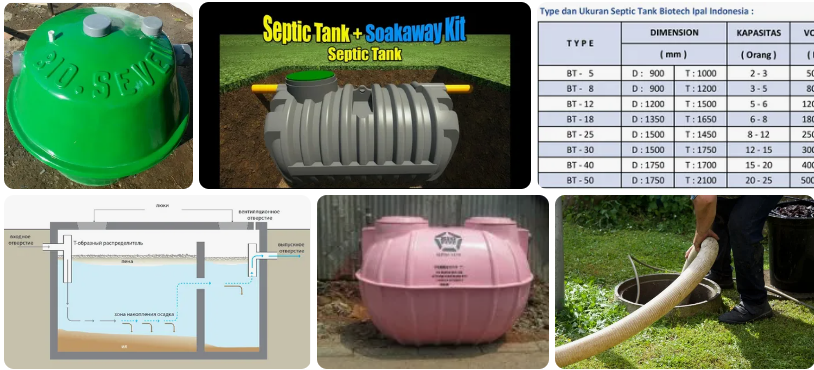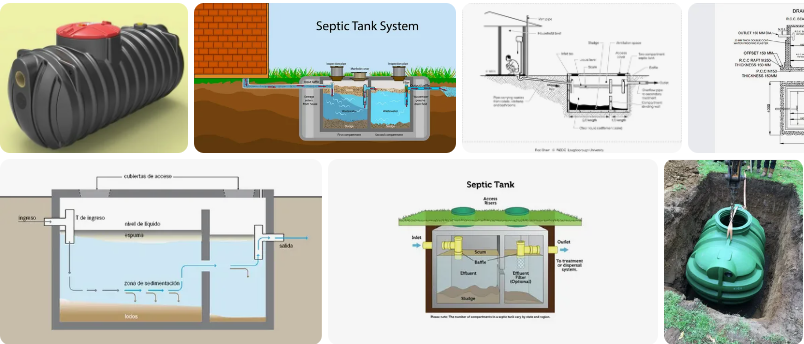Moving septic tank for pool cost can vary significantly depending on several factors. When considering installing a swimming pool, many homeowners face the challenge of dealing with existing septic systems. Whether you’re planning for an inground pool or an above-ground pool, understanding how septic systems work, their impact on your pool placement, and how to move them will save you time, money, and potential headaches.
Table of Contents
Moving Septic Tank for Pool Cost: An Overview
The cost to move a septic tank depends on various factors, including location, the size of the septic system, and the complexity of the job. Generally, moving a septic tank can range from $3,000 to $10,000. Homeowners must consider several crucial factors before proceeding, such as local regulations, the distance the tank needs to be moved, and soil conditions. Moving septic systems requires careful planning and professional assistance to avoid damage and maintain sanitation standards.
Moving Septic Tank for Pool Cost: Key Factors
The moving septic tank for pool cost involves several major considerations that affect pricing. Let’s look at the most influential factors that determine the overall expense:
- Septic Tank Size: Larger tanks require more labor and may involve more complex equipment to relocate, thus increasing the cost.
- Distance of Relocation: The further the septic tank needs to be moved, the higher the price, especially if the area requires extensive excavation or specialized equipment.
- Permits and Local Regulations: Depending on where you live, there may be specific permits required for septic tank relocation. These fees can add up, and you will also need to follow guidelines to ensure compliance.
- Soil Conditions: The type of soil on your property can impact the cost. Rocky or clay-heavy soil is more difficult to excavate than sandy soil, potentially increasing labor costs.
Inground Pools and Septic Systems: What to Consider

When installing an inground pool, the proximity to your septic tank is crucial. If the pool is too close, it can interfere with the septic system’s operation, potentially causing leaks or contamination. Inground pools and septic systems must maintain a safe distance from each other, which is typically around 15 to 25 feet. However, this distance can vary based on local regulations and the size of your septic system.
In some cases, homeowners may need to move septic lines to ensure a proper distance between the pool and septic tank. The cost to move septic lines varies, but it typically ranges from $2,000 to $5,000. This additional expense should be factored into the overall moving septic tank for pool cost if septic lines also need to be relocated.
Above Ground Pool Over Septic Tank: Is It Possible?
Many homeowners wonder whether it’s safe to place an above-ground pool over a septic tank. Above ground pool over septic tank placement is generally not recommended. The weight of the pool, combined with the water and swimmers, can put too much pressure on the septic tank and drain field, potentially leading to system damage. Additionally, placing a pool over a septic tank can limit access for maintenance and repairs, creating costly issues down the line.
If you’re dead-set on installing an above-ground pool near your septic system, consult with professionals to assess the risks and ensure the placement will not compromise your septic system. In most cases, moving the septic system is a better option, even though it will increase your moving septic tank for pool cost.
How Much Does It Cost to Move Septic Lines?
Moving septic lines is a task often required when installing a pool near a septic system. The question how much does it cost to move septic lines depends on several factors. The average cost for relocating septic lines ranges from $2,000 to $5,000. The distance of relocation, soil type, and complexity of the project are the main variables.
In certain cases, moving septic lines is necessary when the original layout of the septic system conflicts with the desired pool location. Professional contractors will first map out the existing septic lines before any work begins. This process includes:
- Excavation: Digging up the ground to access the septic lines.
- Pipe Replacement or Relocation: Rerouting the pipes to a new location.
- Inspection and Testing: Ensuring the septic system functions correctly after the move.
How to Drain Pool with Septic Tank?
The process of draining a pool that is close to a septic tank requires extra caution. How to drain pool with septic tank is a common question for homeowners with pools installed near their septic systems. You should never drain pool water directly into the septic system, as it could overwhelm the tank and cause backups or leaks.
Here are the key steps for safely draining your pool near a septic tank:
- Use an Approved Drainage Method: Contact local authorities to confirm the approved drainage locations for pool water in your area.
- Avoid Draining into the Drain Field: Always avoid releasing pool water near or over your drain field, as it could saturate the soil and prevent the septic system from working correctly.
- Pump the Water Slowly: Gradual drainage helps prevent waterlogging in the surrounding soil, which can negatively impact the septic system pool cost.
How Far Should a Pool Be from a Septic Tank?

Understanding the appropriate distance between a pool and septic tank is essential for maintaining a functional system and a safe swimming environment. How far should a pool be from a septic tank depends on your region’s regulations, but the general recommendation is a minimum of 15 to 25 feet. This distance ensures that the weight of the pool and its water does not interfere with the septic tank or drain field.
Additionally, maintaining the proper distance prevents pool water from accidentally entering the septic system, which can cause significant damage. Always check with local building codes and consult with professionals when planning your pool placement.
Septic Tank Swimming Pool: A Controversial Concept
The idea of a septic tank swimming pool might seem absurd to some, but in rare cases, homeowners have tried to utilize their septic tanks in creative ways, such as using the wastewater for irrigation. However, converting a septic tank into a pool or incorporating it into your pool design is not recommended. Septic tanks serve a vital purpose in waste management, and compromising their function can lead to health hazards and environmental damage.
While it’s crucial to ensure your pool and septic system can coexist, the two should remain separate entities. The best practice is to relocate the septic tank if it conflicts with your pool installation, which adds to the moving septic tank for pool cost but is necessary for safety and proper system functionality.
Moving Septic Tank for Pool Cost: Additional Considerations
Aside from the primary factors that affect the moving septic tank for pool cost, there are a few additional considerations homeowners should keep in mind:
- Landscaping Costs: Moving a septic system often requires extensive excavation and can disrupt your yard. Be sure to factor in the cost of landscaping to restore your property once the septic tank has been moved.
- Inspections: After relocating the septic system, it’s essential to have a thorough inspection to ensure it’s working correctly. Professional inspections cost anywhere from $300 to $500.
- Future Maintenance: Moving the septic system could alter how it functions, especially if the new location has different soil conditions or drainage issues. Plan for regular maintenance checks to avoid potential problems.
Conclusion
Understanding the moving septic tank for pool cost is essential for anyone planning to install a pool on their property. The cost can range from $3,000 to $10,000, depending on factors like septic tank size, distance of relocation, and local regulations. While moving a septic tank is an added expense, it ensures that both your pool and septic system function properly without interfering with each other.
By consulting professionals, following local regulations, and carefully planning your project, you can enjoy your new pool without compromising your home’s sanitation system. Always prioritize safety and system integrity to prevent costly repairs or environmental issues in the future.
About Moving Septic Tank for Pool Cost – FAQ
1. How much does it cost to move a septic tank for pool installation?
The moving septic tank for pool cost generally ranges between $3,000 and $10,000, depending on factors such as the size of the tank, the distance it needs to be moved, soil conditions, and local regulations.
2. Can I install a pool over a septic tank?
No, it’s not recommended to install a pool over a septic tank. The weight of the pool and the water could damage the septic system, and it would also make future septic maintenance difficult. It’s better to relocate the septic tank.
3. How far should a pool be from a septic tank?
The recommended distance between a pool and a septic tank is typically 15 to 25 feet. However, local building codes may vary, so check with your municipality to ensure compliance.
4. What factors influence the cost of moving a septic tank?
The key factors affecting moving septic tank for pool cost include the size of the septic tank, the distance it needs to be moved, soil type, and any required permits. Other costs may involve landscaping and post-relocation inspections.
5. Can I move septic lines instead of the tank?
Yes, in some cases moving the septic lines might be sufficient if the pool placement is in conflict with them. The cost to move septic lines typically ranges from $2,000 to $5,000, depending on the project’s complexity.
6. How long does it take to move a septic tank?
Moving a septic tank usually takes 2 to 5 days, depending on the complexity of the job, the distance of relocation, and local weather conditions. Additional time may be needed for inspections and final testing.
7. What permits are needed to move a septic tank for a pool?
You will likely need local permits to move a septic tank, as well as approval from health or environmental departments. Permit requirements vary by location, so check with your local government.
8. What happens if I install a pool too close to my septic system?
Installing a pool too close to a septic system can cause damage to the septic tank and drain field. This can lead to leaks, backups, and costly repairs. Additionally, it may violate local building codes.
9. Is it safe to drain pool water near a septic tank?
No, it’s not safe to drain pool water near or into a septic tank or drain field. Pool water could overwhelm the system and cause malfunction. Always use proper drainage methods approved by local authorities.
10. Can moving a septic tank affect the system’s performance?
Yes, moving a septic tank can impact its performance, especially if the new location has different soil conditions. A professional inspection and regular maintenance are essential to ensure the system functions properly after the move.
